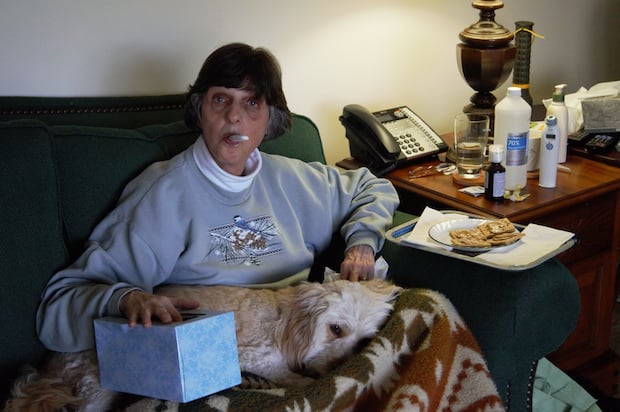I hate those annual bouts of hacking and sneezing. Yet, recent experience compels me to grudgingly acknowledge that the common cold might have a few benefits.
You know how it goes with a cold. At first, you’re Roadrunner. You make plans with the family to go skiing or hiking, to take the subway into the city to wander through the museums despite not feeling too well. You get things done: carting your children to the activity of the season, paying bills, shopping, cooking, cleaning, repairing, maintaining. You are a master juggler. Sometimes you wish things would slow down, but there isn’t anything you want to give up. Okay, you could do without housework, home repair, and 40-hour work weeks, but you like to eat, and you like some semblance of order. In the end, you keep everything on the calendar and on the list of Things to Do.
Then one day you wake up listless and lethargic. Over the course of the day you wind down like a toy soldier with a dying battery. You know you’re coming down with a cold—the cold that your six-year-old brought home along with the list of things he needs by Monday for the science experiment; the cold that your husband is still fighting. You try to keep going. You slog through the days with your foggy brain, your running nose, your aching body, your sore throat, and your nearly empty gas tank accomplishing less and less. Laundry mounts, home repair projects stall, toys and newspapers litter the living room floor, dinner becomes take out, and some of the balls you have been juggling tumble to the ground.
Your body is a tyrant. Eventually, you can go no farther. Your nose is red and raw, and a tissue box has become a fifth appendage. You cannot utter two sentences without hacking, the same hacks that make sleep impossible. You have entered the stage of perfect misery. With the food supply nearing empty, no energy to grocery shop, and a budget that cannot stretch to one more night of take out, you’re wondering what to serve for dinner when your eight-year-old and six-year-old appear with trays of graham crackers, peanut butter, and bananas. These are the same children that just hours earlier, knowing your miserable state, had relentlessly begged and pleaded to go to the zoo. Their earnest faces convey their empathy and their sincere apology for nagging. As you dine on trays in the living room, crumbs all over the couch and floor, you wonder why you do not have graham crackers, peanut butter, and bananas for dinner more often. You top off the evening by playing the computer games your children have begged you to try for months.
A few days later you are surprised by a spark of energy. You consider the to-do list. But since you have been genuinely sick, you send the guilt demons packing and sink into a chair to watch a movie or a football game. At some point, you can no longer tolerate the disorder. You summon the calendar and the to-do list—but you also mark a week in March to not go anywhere, not do anything, and just see what new moves you and your family might imagine. This is the thing about the common cold: In altering the routine choreography of daily life and relationships, it allows a space to imagine new steps and new moves. Other life events certainly have the same potential, but there is nothing that so reliably settles into almost every household every year.
Terry Northcutt is a psychologist. She often muses about the creativity and gentle humor people bring to bear on the ordinary and sometimes uncomfortable events in their lives from Upper Marlboro, Maryland.










